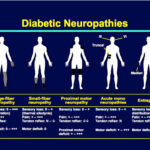Nutrition is an important pillar in lifestyle changes. The other essential components include adequate physical activity, adequate sleep, management of stress, management of loneliness, happiness, and social connections, use and (ab)use of recreational drugs. Consumers love to take food that is tasty as well as cost effective.. The food markets and industry are expanding at an alarming rate.
The food choice, quality of food, learning to cook with healthier ingredients, learning healthier culinary skills, time management, organizing skills, planning and time saving cooking skills also play a role in the final outcome. Strategies such as counting calories, tracking macros and so forth can be overwhelming and demand a steady never ending commitment. Unfortunately food is the most commonly used perishable consumable. Food in the developed world is wasted to as much as one third of the total food intake. In the Middle East it may be more especially during the festive times. There are many countries around the world who penalize the customers when food is wasted. Food waste from home is as high as 50% in the West.
The food industry has exploded tremendously in the past 4 decades at an unbelievable pace. The pandemic scenario set the foundation for a new trend of digital assisted nutrition which helped get food delivered to your room by use of food delivery apps. Unfortunately, food is the comfort for a stressed person and mind. The mind craves for either something sweet or savory at that time. If one succeeds in distracting oneself for a period of 5 to 10 minutes, the craving will evaporate away. Quite strangely, unhealthy food choices are marketed so well on various platforms, food hoardings ( Jumbo meal, take one and get one free, Executive meals, King sized meals and so forth are all to meant to lure the unwary) and also during the commercial breaks while watching the television or movies. Who sells healthy salads or fruits at the movies? The ultra processed food consumption leads to most of the diseases of today. The sugary indulgences, salty snacks, beverages, starchy food, cereals, fats, sauces form the major chunk of the ultra processed food. Cutwaste is an app being developed in the West which can customize ones pantry, AI can suggest recipes based upon what is available in the pantry and suggest tips for smart shopping. It can also do analysis and also give storage tips. This App is expected to spread and be developed globally once the the developer perfects it further.
When one thinks of a diet, the first thing that comes to mind is a salad. Transforming salads from an obligatory side dish to a superstar can help change the way one enjoys the food. Roughly cut Iceberg Lettuce leaves , shreds of red cabbage and carrots, cucumbers, diced tomatoes and red onion usually form the salads. There may be a creamy dressing and/ or a mound of cheese to add to the taste. Salad greens are rich in Vitamins A,C and K, besides being rich in folates and anti oxidants. Only 10% of the adults globally eat the recommended daily recommended intake of fruits and vegetables.
Ideally the macronutrient breakdown of ones diet must include 45-65% as carbohydrates, 25-35% as protein and 10-30% as healthy fats. There may have to be changes made based on ones individual needs.
Food neophobia refers to the reluctance to try out new food. Switching to a pure plant based diet may compromise on the intake of vitamins, proteins, calcium, iron and omega 3. Simple swaps may help.
It was observed in a study in the West that those who consumed 10-15 meals prepared at home had a 15% lower risk of developing type 2 diabetes when compared to those who took most of the meals from outside of their home kitchen.
Healthy food is often touted as dull, boring, and tasteless, but it can be made more flavorful in the hands of clever cooks. Never force yourself to eat healthy food all the time as it is not sustainable.
Food purchasing
Getting the seasonal produce locally grown (even better if grown at home) and which are fresh are important. The shelf life of the food, how quickly they will be consumed, the long term costs are also to be considered when shopping. One can opt for shopping weekly or place a web order to have them delivered at home. To save time when shopping, one can plan ahead. There are issues with the fertilizers being used and so fruits and vegetables grown organically are better.
Storing the food before and after cooking
USDA Food keeper is an app which gives details of shelf time when refrigerated or kept at home and stilltasty.com is a website which can details how safe and long food and beverages can be stored at home.
Some of the food stuff can be kept in zip lock bags, plastic containers , glass containers or silicone moulds in the freezer or refrigerator and thawed out depending upon the need.
Teaching children cooking skills.
This is an important aspect in family time. Children will be excited to be part of the culinary process and it can also give them creative ideas, distract them from unnecessary screen time and junk food and above all also help improve their ability to live independently when they grow up.
When they are between 2 and 3 years of age, they can be allowed to practice kneading and mixing with their hands- be prepared for spillage and fun cleaning up the mess.
When they are aged between 3 and 5 years, they can be given stirring, mashing and mixing as when making the dough or batter for cakes.
When they are aged between 5 and 7 years, they can practice peeling with fingers and shaking liquids.
When they are aged between 7 and 9 years they can learn to use the oven or grate.
When aged 10 and above, they can use the peeler, can opener and use sharp scissors. Knife skills will have to be supervised and individualized.
Home cooking creates a purpose and connection to one another which, in turn, are linked to increased happiness and reduced anxiety and depression.
www.Chopchopfamily.org is a useful fun filled website that helps improve the culinary skills of kids and families alike.
It has been observed that adequate cooking skills developed early in childhood into the teen years can foster healthy eating habits with better health outcomes during the adult years.
Healthier cooking options:
Steamer– The food item is kept in porous steel vessels, bamboo baskets or wrapped in leaves over boiling water. This is a moist heat method in which the steam helps in cooking. The food does not come in direct contact with the liquid unlike in boiling. Dim Sum, animal protein and vegetables can be cooked by this method. This method helps preserve nutrients, color and texture. Cooking using the Tagine is an ancient way of slow cooking.
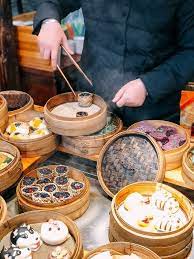
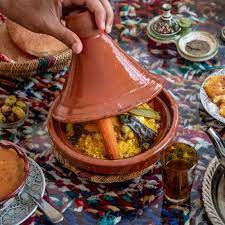
Grilling: vegetables, fruit, Tofu, animal protein can be cooked this way. The food item to be cooked is kept over direct heat from below. The food is kept on a grilling grate. The heat source can be either charcoal, wood, gas, or hot stones. The duration of cooking depends upon how thick the cut is. Thinner cuts cook easily and it needs to be turned over to allow even cooking. Thick cuts may take much longer and may also cause charring of the exterior, and the inner layers may still be under cooked.
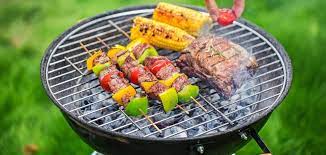
Roasting– Thick cuts of animal protein (usually meat), root vegetables or bulb vegetables are cooked this way. This is a slow cooking process using indirect diffused dry heat from either an open flame or oven. This cooks evenly on all sides. It may need to be rotated on a spit or rotisserie.
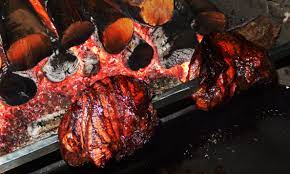
Sauteing– This is a method of cooking at high temperatures for a very short time in a little amount of oil in a wok. The oil helps prevent the items from sticking to one another. Thin cuts of animal protein and vegetables can be used by this method. It retains texture and flavor and gives a crunchy feel. This method of cooking needs the items to be tossed around. This is a healthier alternative to frying.
Boiling- cooking at high temperatures in water or any other broth.One can use stock, wine, lemon juice or vinegar as an alternative to water for added flavor. The alcohol content in wine will be burned out during the process of cooking. However, water soluble vitamins may be lost by cooking this way.
Blanching– Cooking spinach or cabbage in hot water for a short time and then immersed in ice cold water will help preserve the vitamins and color.
Stewing is a method where the vegetables are cooked in a small amount of water and is a type of boiling and steaming together.
Broiling is a technique where the food is cooked with the heat source from above.
Poaching is a cooking method where food is submerged in liquid- stock, wine, water or milk. Thin cuts of animal protein, eggs, fish, vegetables and fruits can be cooked by this way.
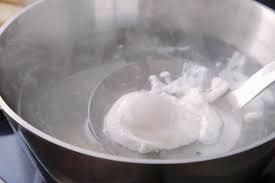
Ground Oven– a large pit is dug the size depending upon the food size to be cooked. The pit is lined with rocks which roughly match the size of the cuts you want to cook. The rocks are heated up with a flame. The larger rocks take longer to heat up but retain heat longer and are used for larger cuts of animal protein. Wrap the food item in foil or leaves and lay them atop the hot rocks. Cover the wrapped food item with hot rocks again so it allows cooking the top as well. Cover the pit with sticks and or leaves and then pile up sand. It is left untouched for 2 -6 hours depending upon the size of the food item. Some countries use wet sacks to cause steam.

Microwaving– cooking using microwaves which are electromagnetic. A microwave must be best used for thawing frozen food or just re-warming rather than for frank cooking. There are vessels which are compatible for use in a microwave. Cooking with a small amount of water can create steam which helps preserve some of the nutrients. Microwaving is an engineering marvel and is convenient, but food may be unevenly cooked. The food may become dry if there is not enough water content. It has also been suggested as a cause for the increasing cancer.
Air fryer– is a more modern way of cooking by dry heat and the setting can be adjusted depending upon the food to be cooked. Water, cheese, wet batter, popcorn, red meat and vegetables containing less water content such as broccoli and fresh greens are not suited for cooking by this method.
Advanced Glycation end products (AGE) are formed by broiling, frying, or grilling than when compared to boiling, steaming or poaching. AGE is linked to metabolic syndrome and Type 2 diabetes.
Handling the leftovers
One of the commonest means of storage of leftovers is to refrigerate them. However, what ever be the food it must be refrigerated within 2 hours. In places where the temperatures are high, one must refrigerate them in an hour. One can place the food in the refrigerator without having to wait till it cools down. If there is a large portion of food, it is wiser to store them in small bits so one can thaw out and consume the food portion that is necessary. Once thawed, it is not safe to refreeze. One can write the date of storage to prevent doubts later on. Some people keep the frozen food in hot water or keep them outside which can actually help the bacteria to grow. It must be known that refrigeration does not kill the bacteria or pathogens, but can only slow down its growth. If one is to heat the food, it can be done in a microwave. but one needs to turn the food over in between to allow evenness of cooking. If heating over a stove, one must heat up to 165 Fahrenheit.
The leftover protein (fish, poultry, or meat) can be used in sandwiches, salads, soups or stew. It can be mixed with rice as modified as well.
Leftover vegetables can be added to an omelet, can be pureed to a soup, can be combined with animal protein or can be mixed with rice or noodles.
Leftover rice can be reheated as a side, or can be converted to fried rice or as part of a salad.
Leftover legumes can be steamed, pureed to soups, can be added to salads, converted to warm side dishes, or even lightly pulsed to make a batter which can be used to form the base for an omelet (without eggs) or pizza with vegetable of protein toppings or as a bread spread or even to make a steamed thin batter dish called dosa.
Marinating raw fish with lemon juice and topped with cilantro is called Ceviche. There are cuisines around the world using Banana stem, Banana flowers, drumstick flowers besides other edible flowers. The list is endless.
Making salads:
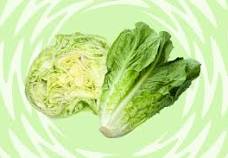
Iceberg Lettuce– the basic lettuce, has a high water content, it is crunchy and can act as a wrap.
Romaine Lettuce– has lot of water, it is crisp and sweet to taste.
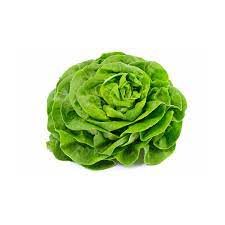
Butter head – the name is given for the silky soft texture and does not have a buttery flavor. The leaves are wavy and cupped. There are 3 types namely, Boston which has deep red leaves, Bibb which are lighter and more compact and Scarlett which has maroon edges on green leaves.
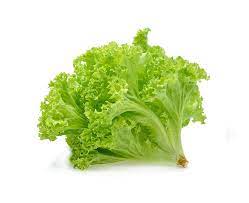
Loose lettuce leaves also called Coral lettuce may come in either green, red or oak colors. It is crisp at the center.


Arugula and Radicchio are bitter and peppery and not belonging to the Lettuce family. One can toss in roughly torn mint leave, shredded chives or basil leaves.
One can toss in walnuts, pine nuts, croutons to give a crunch, or protein in the form of either chicken shreds, shrimps, steamed lentils or pulses as sprouts. Adding thin strips of Zucchini or Asparagus can be an alternative. Grilled Zucchini, mushrooms, bell peppers, onion, corn can be used on the salads.
Ground mushroom can be used on proteins, veggies can be coated with mustard and/or olive oil before air-frying, making cutlet of veggies and /or protein , adding veggies to oats, cauliflower or broccoli can be lightly pulsed and steamed with veggies or protein, addition of micro-greens are all alternatives to make the cooking more interesting and to break the monotony.
A homemade vinaigrette of oil and lemon can be made in lieu of the bottled salad dressings.
In the present era, AI ( artificial intelligence) can come out with a meal plan if you feed in the specifics. The downside is it cannot read the blood test results, cannot suggest cooking methods, there may be a lack of flavor or variety.
When one says, oat meals are healthy, one must remember rolled oats cooked in water, cooked in milk or adding hot water to the sweetened oat meal sachets all vary in calories.
Common food allergens are milk, wheat, eggs, fish, shell fish, soy and peanuts.
Pesticide residue on fruits or vegetables can be assessed by the pesticide residue calculator at safefruitsandveggies.com . Nutritionix is a large database of nutritional information,
One can use avocados, nut spreads, hummus, pulsed legume as a sandwich spread instead of butter or sandwich spreads. Use falafel, lean chicken cuts, thin salmon,Soy, nuts, legumes or tuna cuts instead of processed meat.
Reduce the use of soy sauce, tomato sauces, salad dressings, BBQ sauce, stock powders, salted nuts, dehydrated stock mixes and packed frozen meals as these contain high quantities of salt and/or sugar.
Cookware coated with Polytetrafluroethylene ( PTFE) or commonly referred to as Teflon coated is the most widely used for ease of cooking and cleaning. However, at high temperatures, poisonous fumes can be emitted. To avoid the risks when using such Teflon coated cookware, one can prevent preheating the pan, avoid cooking in high heat, ventilate the kitchen, use wooden plastic or silicone spoons, avoid scouring pads when cleaning and to replace the cookware when the coating is chipped, flaking or peeling. There are alternatives to the Teflon coated cookware such as Stainless steel, cast iron, ceramic, silicone or stone ware.
Tips while eating
There is so much information on social media which gives ideas about food, but can be confusing amd overwhelming.
Energy density is a term one needs to be familiar with. High energy food means it has high calories in a small amount of food and low energy density food means low calories in a large amount of food. A cup of raisins carries almost 500 Kcals versus a cup of grapes which has only 105 Kcals.
Generally, fruits and vegetables have high water content and fiber content which slow down digestion and allows the stomach to feel full longer thereby cutting down on unnecessary food intake. Zucchini, broccoli, carrots can be used in soups, and can be taken after light steaming or cooking. Fruit juice contains high sugar. Substituting fresh cut fruits in low fat yogurt is a better choice than a rich sweet indulgence.
Cooking when you have “little time.”
Organizing the meals ahead can be an option where one can dice the veggies the day before, store them and do the cooking at night. Vegetable or chicken stock can be prepared ahead of time and stored.
One can make a soup fresh with vegetable cuts and diced animal protein. One can use lemon instead of salt, one can avoid using the sauces or taste maker packets. Some cuisines use dried lemon in the dishes while cooking.
In some households a One Pot meal can serve a meal for a full family.
Avoid using prepackaged food from the supermarkets as they are calorie dense.
Home cooking is the new health behavior.
Different cuisines around the world
Depending upon the geographical location, the locally available produce, race, culture and tradition, cuisines around the world vary. Some have been modified by the Western influence.
The South East Asian Cuisine ( including Japanese, Taiwanese, Vietnamese, Malaysian, Korean, Indonesian, Thai, Chinese) have plenty of vegetables, protein, nuts and seaweed. Generally the people eat only till 80% full instead of being overstuffed. People here generally travel by foot or cycle besides using the public modes of transport. The cooking techniques incorporated are steaming, pickling, blanching, grilling, boiling, sauteing and fermenting. Oil and salt are used in less quantities generally. Seaweed is a rich source of vitamin A, C, iron, magnesium, calcium, omega 3 and iodine. A rainbow salad is preferred in these cuisines incorporating the colors red, yellow, green, violet, white with a balance of protein in the form of meat, fish, chicken, mushroom or soy and eggs with a small amount of staple being rice generally. Lotus stem and root is used in Vietnam, coconut milk is used in place of cream in Thailand, herbs are used instead of cheese. Green papaya as a vegetable is used in salads.
Ichiju Sansui is a Japanese dish comprising a Miso soup and 3 dishes which is a balanced diet in Japan. Bibimpap is a famous dish from Korea, Tom Yam Soup from Thai, Laksa from Malaysia and Singapore are soups. Kimchi has gut friendly probiotics, can be stored for long and is a storehouse of nutrition.
The downside is excess salt when fermenting food such as in Kimchi or pickling of vegetables and in some sauces can make the food choices unhealthier. Sushi, Ramen noodles, and Sukiyaki are generally not served in traditional meals in households. Though fish is healthy, farm grown fish may be unhealthy due to the unnatural food they are given and many fresh fish are loaded with mercury which can be dangerous if consumed in large quantities.
The Middle Eastern Cuisine as seen in the Arab, Iranian, Armenian, Morocco,Kurdish, Turkish and so on use lean protein, lots of lamb, healthy fat, vegetables , grains or seeds and high fiber. Extra Virgin Olive oil is used in plenty in this cuisine. Fresh herbs are used as a garnish in many of the dishes. The influence of the Asian cuisine helps give a different flavor. The uses of spices under the Persian influence is a striking and noticeable feature. Thyme ( locally referred to as Za`atar) , cumin and coriander are used in the dishes besides the other spices. Steaming, grilling, broiling, ground oven, Tagine, babrbequeing and roasting are common traditional methods used for cooking in these countries. Frying is not a preferred method. Bulgur and Couscous are used in these countries. Lentil soup, Dolma ( rice covered in vine leaves), Fattoush, Tabouleh, Falafel, Shakshouka (a Moroccan dish of eggs and tomato) and Shawarma ( meat or chicken cooked on a rotisserie wrapped in bread mixed with pickled vegetables, Jalapenos and mayonnaise or humus from chick peas) are renowned dishes of the this cuisine.
The Nordic cuisine involves cooking with seasonally available produce from the country side, fish from the sea and lakes such as Salmon, Tuna, Mackerel and Sardines . Plant based food is preferred. To help store the food for prolonged duration due to the peculiar geographical location fish may be dried , smoked or salted.
The Eastern European cuisine uses food preserving techniques such as drying ( mushrooms), pickling ( vegetables, smoking ( fish), salting( meat) and alcohol preservation for certain fruits due to scarcity of produce.
Rather than introducing new dishes, ingredients, utensils or skills people can be encouraged to look out for useful tips and easy to grasp practical advice to make their repertoire interesting or tasty. Online demonstrations, articles, media, in-store demonstration or from family and friends( the advice from an elderly grandmother is beyond comparison) Tips may relate to improving taste, speed of preparation, minimizing food waste, maximizing health, how to store food, how to add flavors and how to perfect a dish.













